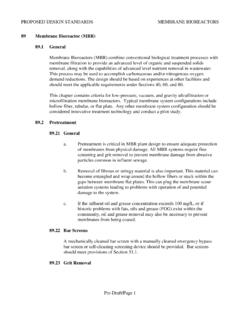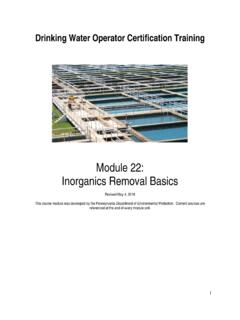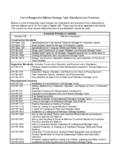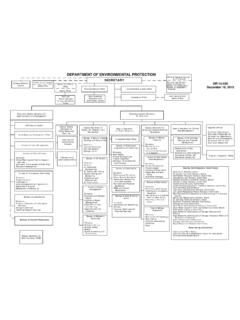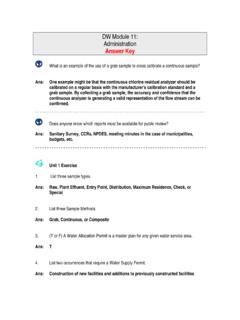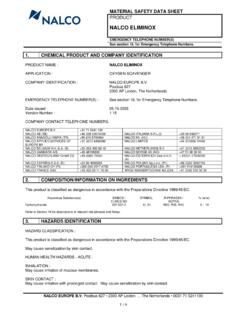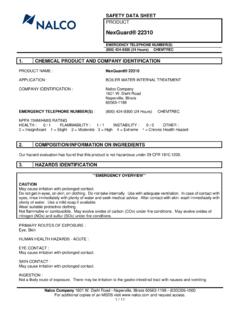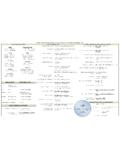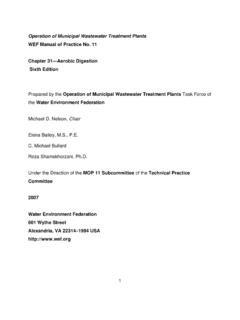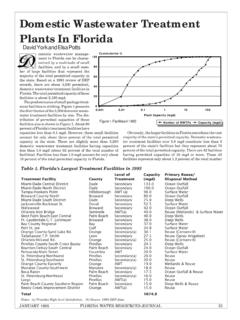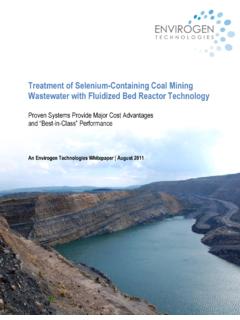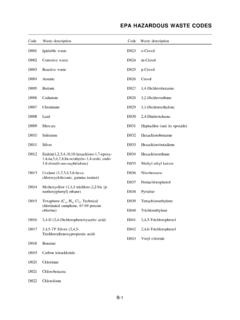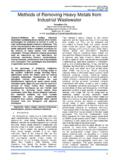Transcription of Module 9: Basics of Pumps and Hydraulics
1 wastewater treatment Plant Operator Certification Training Basics of Pumps and Hydraulics This course includes content developed by the Pennsylvania Department of Environmental Protection (Pa. DEP) in cooperation with the following contractors, subcontractors, or grantees: The Pennsylvania State Association of Township Supervisors (PSATS) Gannett Fleming, Inc. Dering Consulting Group Penn State Harrisburg Environmental Training Center Module 9: Module 9: Basics OF Pumps AND Hydraulics Bureau of Water Supply and wastewater Management, Department of Environmental Protection wastewater treatment Plant Operator Training i Topical Outline Uni I.
2 FoA. Definitions and Units of Measure ion Factors II. Flow Rate and Continuity Equation C. conversion Factors & Sample Problems Unit 2 Open Channel (Gravity) Flow l (Gravity) Flow Flow es ating Pipe Capacity D. Minor Losses III. Open Channel Flow Measurement A. Parshall Flume B. Weir t 1 Basic Hydraulics rce, Pressure, and Head B. Convers locity and Flow Rate Velocity I. Definitions A. Open ChanneB. Steady StateII. Energy LossesA. Basic Principles B.
3 Friction LossC. EstimMODULE 9: Basics OF Pumps AND Hydraulics Bureau of Water Supply and wastewater Management, Department of Environmental Protection wastewater treatment Plant Operator Training ii Unit 3 Pressure Flow in Force Mains ion II. pacity ses III. Other Hydraulic Considerations /Siphons ves A. Venturi Meter Uni I. Pump Basics of Pumps in wastewater treatment B. orsepower, and Efficiency C. alculations y Curves II.
4 A. Basic B. Types and Application C. Pump Curve Characteristics III. Positive Displacement Pumps A. General Description B. Types and Applications C. Pump Curve Characteristics I. Pressure Flow in Force Mains A. DefinitEnergy Losses Basic Principles B. Friction LosC. Estimating Pipe CaD. Minor LosA. Static Head B. High PointsC. System Head CurIV. Force Main Flow Measurement B. Magnetic Flow Meter t 4 Pump Types and Applications A.
5 Purpose Flow, Head, HRelationships and CD. Head/Capacit Centrifugal Pumps Components Bureau of Water Supply and wastewater Management, Department of Environmental Protection 1- wastewater treatment Plant Operator Training 1 Unit 1 Basic Hydraulics use these formulas to solve wastewater treatment plant Define velocity and flow rate, and use the continuity equation to solve wastewater treatment plant problems. Learning Objectives Define force, pressure, and head, andproblems. Convert head to pressure and pressure to head.
6 FORCE, PRESSURE, AND HEAD Bureau of Water Supply and wastewater Management, Department of Environmental Protection 1- wastewater treatment Plant Operator Training 2 Definitions and Units of Measure Force is the push exerted by water on any surface being used to confine it. Force is usually expressed in pounds (lbs) or tons. Pressure is force per unit of area. Pressure is expressed in units of force per unit of area, usually lbs/sq. in. (psi). Head is the vertical distance from a free water surface to a reference point below the surface. f water. It can also y (Hg), or mm of Hg.
7 Head is expressed in units of length of the fluid being measured, usually feet obe expressed in inches of water, inches of mercur Take care that you are consistent with units of measure. For example do not mix units of gallons er conversion factors. conversion Factors Example Determine factor to convert feet of head to psi. and liters or feet and meters without prop Figure One cubic foot of water foot of water weighs lbs. lbs. The force per unit of area is lbs per 1 sq. ft. Since there are 144 sq. in. in 1 sq. ft., the force in lbs/sq. in.
8 (psi) is: lbs. 1 cubic Therefore, the force on the bottom of a cube of water, 1 ft. on each side, is = psi. 144 sq. in. Pressure increases with depth. Pressure at any given depth acts the same in ALL directions. It will act on the walls of a vessel as well as the bottom. FORCE, PRESSURE, AND HEAD Bureau of Water Supply and wastewater Management, Department of Environmental Protection 1- wastewater treatment Plant Operator Training 3 Activity : Convert 45 psi to feet of head. Hint: Pressure (psi) x 1 psi = _____ ft Figure Relationship of pressure and head FORCE, PRESSURE, AND HEAD Bureau of Water Supply and wastewater Management, Department of Environmental Protection 1- wastewater treatment Plant Operator Training 4 Activity : Determine pressure (in psi) on the wall of a sedimentation basin 2 ft.
9 , 5 ft., and 10 feet Head is vertical distance from water surface to reference point below the surface. Head on below water surface (in feet). Hint: Head (ft) x psi/ft of head = _____ psi below the water surface. Hint:wall (in feet) is equal to distance Figure Head and pressure in an open basin FORCE, PRESSURE, AND HEAD Bureau of Water Supply and wastewater Management, Department of Environmental Protection 1- wastewater treatment Plant Operator Training 5 Activity : What is the upward force on an empty tank caused by a groundwater depth of 8 feet bThe tank is 20 feet by 40 feet.
10 Hirea Pressure = Head x psi/ft Make sure to convert Pressure to lbs/sq. ft. a ove the tank bottom? nt: Force = Pressure x A Figure Ground water pressure on an empty tank VELOCITY AND FLOW RATE Bureau of Water Supply and wastewater Management, Department of Environmental Protection 1- wastewater treatment Plant Operator Training 6 Velocity Velocity is the speed at which a particle of a substance is moving. It is expressed as a distance traveled over a period of time, for instance miles per hour (mph) or feet per second (fps). Assume a channel 1 ft.
